Introduction
One of the main problems encountered in modern vacuum tube design is a great lack of available information. A good example of this is the data available for power amplifier tubes. Often times all that is available is a data sheet, some simple design point information, and maybe some plate circuit characteristic curves if we’re lucky. If someone wants answers about using the tube at a different operating point than that referenced in the data sheet they’re pretty much out of luck. And it’s not like today, we can simply pick up the phone and call RCA or GE and start asking questions about vacuum tubes. We modern tube circuit designers are on our own.
Anyone that knows me also knows that the 6V6 is probably my favorite power pentode to be run in the “Ultra- Linear” or “UL” topology. This is especially the case when Single Ended (SE) designs are considered. But I recently came to realize that I didn’t really have the data I needed to intelligently choose an operating point for my designs. In the past, I have simply been using pentode design points off the data sheets, because the DC bias calculations for UL and Pentode operation are the same, and hoping for the best in dynamic UL operation. There has to be a better way. So I decided that I should perform some investigations of the 6V6 in SE-UL operation and see what I could find out.
Now in fairness, there is “some” information concerning the 6V6 in UL mode available on the internet. However, the majority of this information is focused on push-pull configurations and finding the “optimum” point for the UL taps on the output transformer. In addition, a comprehensive set of data concerning biasing the 6V6 in UL mode simply does not exist. Today, we know that the proper UL tap position for minimum distortion is approximately 40% to 43% and today most commercially available output transformers use approximately this tap point. But we still don’t have the critical data we need outlining the operation of the tube in this configuration. This lack of bias and operation data is the problem which I endeavor to address.
The Setup
The act of deciding how to go about these investigations was not nearly as simple as one might assume. As I said, I wanted to look at the operation of the 6V6 in SE-UL topology. But I needed to decide on an approach that makes sense for builders today. I decided that what I would do is settle on one load transformer and then investigate the operation of the circuit at different plate voltages and bias levels. I also decided that I would utilize a cathode bias circuit as this topology is inherently lower distortion than a fixed bias approach. Following a little experimentation I settled on a 5kΩ plate load. These decisions resulted in the test circuit shown below.
This circuit uses an Edcor GXSE10-8-5K UL transformer as the load for the power tube. The transformer is terminated with an 8Ω resistive load. For bias adjustment I used a 25W 1kΩ rheostat bypassed with a 200μf capacitor which allowed me to set the bias at each operating point. The resistors Rsp and Rss are 1.5Ω sense resistors so that I can measure screen and plate currents at each operating point. They are small enough that they have no effect on circuit operation. The tube is driven by a 4S preamp using a 12AU7, which is driven by my signal generator. The B+ is supplied by my bench power supply, a Heathkit IP-17. The tube used in the test setup was a JJ 6V6S chosen for it typically good performance and inherent ability to handle marginally abusive operating conditions as I adjusted the test setup. Here is a picture of the whole test setup on my bench.
The approach to test was simple. Because I wanted to characterize the performance of the 6V6 and not the circuit, per say, I decided that I would control for constant plate voltages, choose several values based on data sheet information and vary the bias levels at these plate voltages to see how the tube performs. Looking at the various data sheets, I decided on the following five values of plate voltage (i.e. the DC voltage between plate and cathode pins): 200v, 225v, 250v, 275v, and 300v. Below 200v, the tube is really not capable of much and above 300v is beyond the maximum rated voltage for the tube. At each plate voltage I varied the bias voltage and collected data on power out (in the 8Ω load), harmonic distortion, plate and screen dissipation, and current levels. All data was taken at 1kHz.
The Data
Taking the data was fairly simple. I would adjust the B+ voltage to get the value of plate voltage required, choose a bias voltage that was close to max plate dissipation, and then record data on tube operation. In the determination of performance at each point, the peak drive voltage was set equal to smaller of either the bias voltage or the cutoff voltage. Then I would raise the bias voltage (i.e. increase Rk) and repeat until the distortion raised above 5% or some other performance parameter got to an unacceptable level. The process should become clearer as the data is presented.
The first piece of data, and the one in which most people are probably most interested, is the RMS power output verses the bias voltage. This data is shown below.
This data set shows how the maximum RMS output power delivered to the load (as measured at the actual load resistor) varies with bias voltage at each of the chosen plate voltages. Because plate current increases as the bias voltage is reduced, the maximum plate dissipations are represented by the left most points on each curve. Examination of this data clearly shows two very interesting points. The first is that the optimum power out is primarily driven by the chosen plate voltage. Variation in bias voltage at a given plate voltage really doesn’t have a great effect on peak RMS power output. The maximum variation being less than 1.5dB except for the lowest bias voltage points on the 200v and 225v curves. The second point illustrated is that there is a bias voltage “sweet spot” for each of the plate voltage curves with respect to the power out. This tendency becomes more pronounced as the plate voltage rises.
The next piece of data, which is of as much importance as the power curves above, is the distortion data. The following plot shows the total harmonic distortion in percent, verses bias voltage, at each of the chosen plate voltages.
This data demonstrates another interesting trend. There appears to be a minimum distortion bias for each of the three lower plate voltages. These minimum points probably also exist for the upper two plate voltage curves, however in these lower bias voltage ranges the tube is plate dissipation limited. What this data also clearly demonstrates is that at each plate voltage level, it is possible to achieve a reasonable distortion level at the maximum output power point. For example, at 275v plate voltage, the 18v bias that gives maximum power output also achieves this with only ≈2.5% THD. This is good to know.
A different way to look at this data is to combine the two data sets and plot the power out vs THD levels for each plate voltage. The importance of such a plot is that in most instances, the design process comes down to performing trade offs between lowering distortion and raising power. This plot puts them together so we can see exactly how they interrelate.
This plot immediately throws the power verses distortion relationships into clear perspective. Lower distortion is to the left, higher output power is toward the top. This plot is the first that actually allows us to begin to make some decisions.
At each plate voltage level it shows a similar trend. There is clearly a trade to be made of power verses distortion at the lower distortion levels, but for each plate voltage, there is a clear point of diminishing returns. Above this point on each curve, distortion greatly increases with no meaningful increase in peak output power. Before we make use of this data, there are two other data sets that need to be evaluated. These are plate and screen power dissipations verses power output and plate and screen currents verses power output.
This power dissipation data is especially important for the 6V6 family because of the two types of tubes available. The original 6V6/6V6GT (and the 7 pin 6AQ5/6AQ5A, 6005, and 6999) are limited to 12W plate dissipation while the newer 6V6GTA/B/C, 6V6S, and 7408 are limited to 14W plate dissipation. But what this data shows is that, except at very high plate voltages, the tube peak performance points are all below the 12W limit. There are however plate voltage limitations on the basic 6V6/6V6GT, the basic 6AQ5, and the 6005 of 250v. The newer 6V6GTA/B/C limit is higher at 300v, the 6V6S has a huge 450v limit, and the 7-pin 6669 tubes have different plate voltage limits depending on the manufacturer. The lesson here is to be sure of the limits on the tube you are using when you pick your design points.
The other point of interest concerning dissipation is that at no time did any of the configurations have a screen dissipation in excess of 2w. As such, screen dissipation is not something about which you need to worry when using this data regardless of the tube you choose to use. This low screen dissipation power seems to be a basic characteristic of UL operation. As such, screen resistors should not be required except in very special circumstances.
The other data set of interest is the plate and screen current vs power curves. This data is important for power supply design and if you are using smaller output transformers which may have a saturation current limitation. Here is what the data looks like.
As can be seen, for the most part currents run under 50mA total. This is usually well within the limits of most small UL transformers. The other nice thing about this is that, in most cases, 100mA of total B+ current is enough to put together a complete stereo amplifier.
One other thing to which you should pay particular attention is the highest power dissipation point in the 300v data series. The abnormally low screen dissipation and current for this point clearly indicates something unusual happening within the field structure of the tube. Although I cannot currently explain the exact phenomenon, I think it is clear that this combination of high plate voltage and high plate dissipation should be avoided.
The Optimization
So the only thing remaining is to put all this data to good use to arrive at some point of optimization. But what exactly does the word “optimization” really mean? Herbert Reich in his text “Theory and Applications of Electron Tubes” has this to say on the subject of power stage optimization:
“Restrictions on operation that must be taken into consideration in the determination of optimum power and optimum load resistance include allowable nonlinear distortion, allowable grid current, available grid circuit input power, and grid and plate dissipation.”
In large part, what this means is that there is no single optimization condition. Optimization is an act of achieving balance between various factors to best achieve the goals in mind. So when I use the word optimization in this context, what I mean is achieving a balance between distortion and power. Other factors like B+ voltage and current levels I will adjust to get the results I want.
In the optimization data that follows I have chosen from each plate voltage series, a single bias point which I believe reflects the best tradeoff between peak power out and distortion at that voltage. These individual points are then folded into a single data set which represents a set of optimized conditions for the 6V6 operated in a cathode biased ultra linear configuration with a 5kΩ load transformer.
All parameters are plotted against the tube operational plate voltage Vp. Please note that this is not B+ voltage but the actual plate to cathode voltage. This distinction allows this data to be used for a fixed bias configuration as well, with the understanding that the distortions my not be quite as good. I present the data in three different pieces. The first, is a plot of the optimum bias voltage (Vk) verses the plate voltage. This plot shows how the bias voltage should be changed as plate voltage is changed.
This plot shows that the progression of Vk as Vp increases is fairly linear. I believe this to be a good result because it shows that the optimization point of the tube changes proportionally to circuit voltages. This implies that these optimized operating points really are related to the inherent structure of the tube and not to some chance circuit configuration. The other important thing to note is that the optimized bias voltages are somewhat greater than those generally published for pentode operation. For example Vp=250v and Vk=12.5v for pentode operation from the GE 6V6GTA Nov 1967 data sheet verses Vp=250v and Vk=16v for UL operation above.
The next set of plots show how the circuit behaves at these bias points. These plots show peak RMS power output at each point, the THD at max power for each operating point, and the plate and screen current levels. Here are the plots.
These results illustrate two very important relationships. First is the repeat of the relatively linear relationships between optimized operating points and tube voltages (and current) noted above. The second is that there very clearly is a global optimization in distortion (for the 5kΩ load) around Vp=250v. This gives us a clear choice of operating points if minimum THD is of primary importance. Especially if using 7-pin members of the family with a 250v maximum plate voltage.
The final two plots concern the choice of circuit parameters to achieve these operational conditions. The first is a plot of the B+ voltages used to achieve these circuit conditions. As each bias was dialed in, the B+ was adjusted to ensure that the plate voltage was maintained very closely. In all but one case the B+ voltages at each plate voltage were very nearly constant; within about 1.8v for all bias voltages investigated. And the second plot shows the all important cathode resistor value at each optimized bias point.
It is very interesting to note that value of Rk for optimized operation did not change significantly over the entire Vp range investigated. The total change from lowest (365Ω) to highest (398Ω) being only ≈9%.
And finally here is the data I used to plot the optimized operating curves.
Conclusion
So now that I’ve gone through all this data it’s time to decide if I’ve met my goal. In the introduction I stated “This lack of bias and operation data is the problem which I endeavor to address”. After performing this investigation, I now have a complete set of data on how to bias and operate the 6V6 in the SU UL configuration (at least at one load resistance) for my future builds. So I would assert that I have met my goal stated at the off.
I also think that I have concluded that running the 6V6 above Vp=275v in SE-UL configuration is not warranted. When going to Vp=300v the difference between 4.3W and 5.4W is only 1dB, the THD is 36% higher, and I just don’t like the screen current behavior at Vp=300v. There is clearly something happening in the tube at this level of plate voltage which doesn’t look right. And if it doesn’t look right, there is a good chance that the sonic results will be less than optimum.
Overall I consider this a successful endeavor. As I start my next design I won’t have to just use pentode bias points and hope for the best. I’ll be able to consult the data I collected and intelligently chose an operating point that meets my design goals and works well with the rest of my design. My hope is that others will also find this information helpful as they start their own 6V6 SE UL builds.
Drop me a note and let me know what you think about 6V6 SE-UL bias optimization.

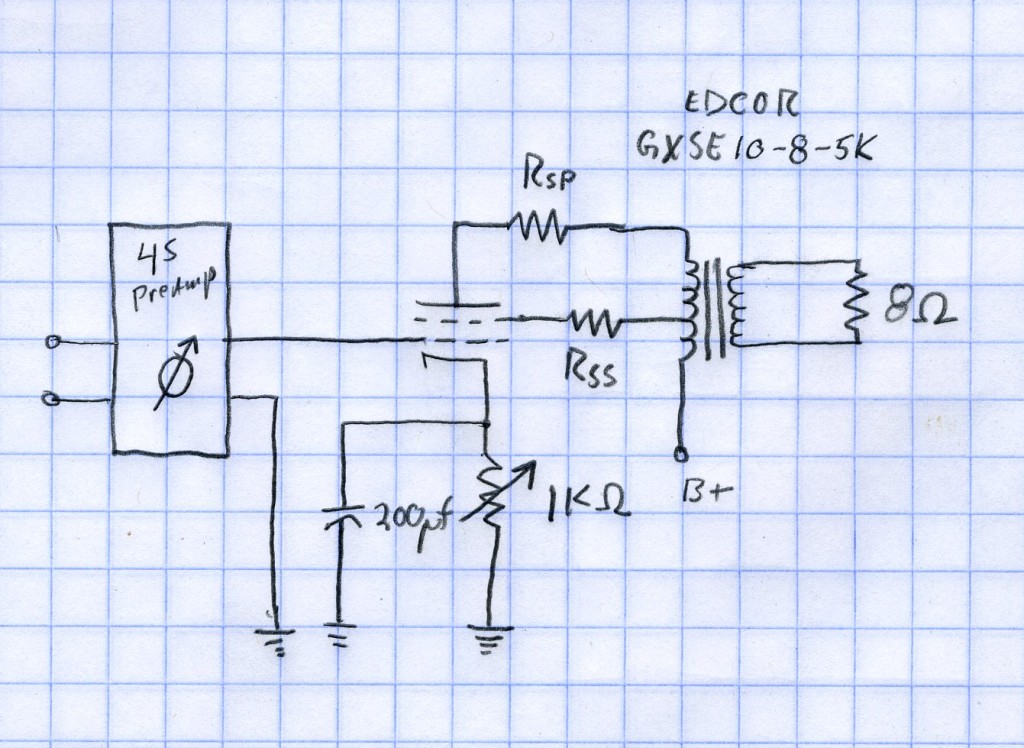
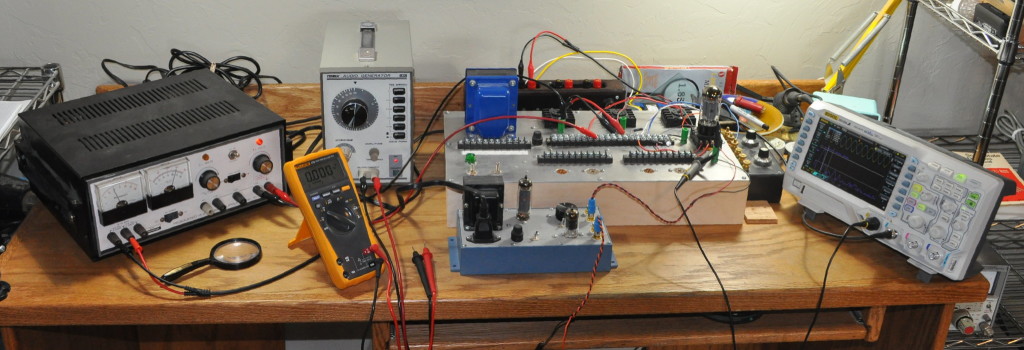

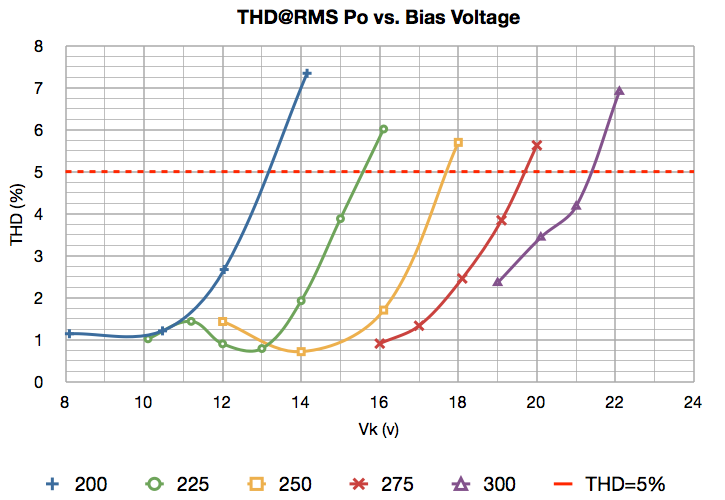
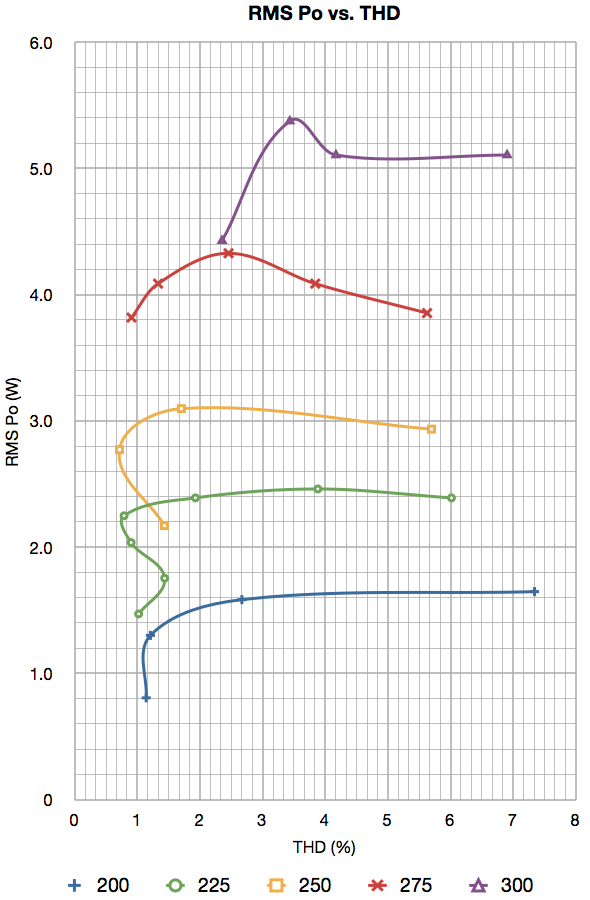
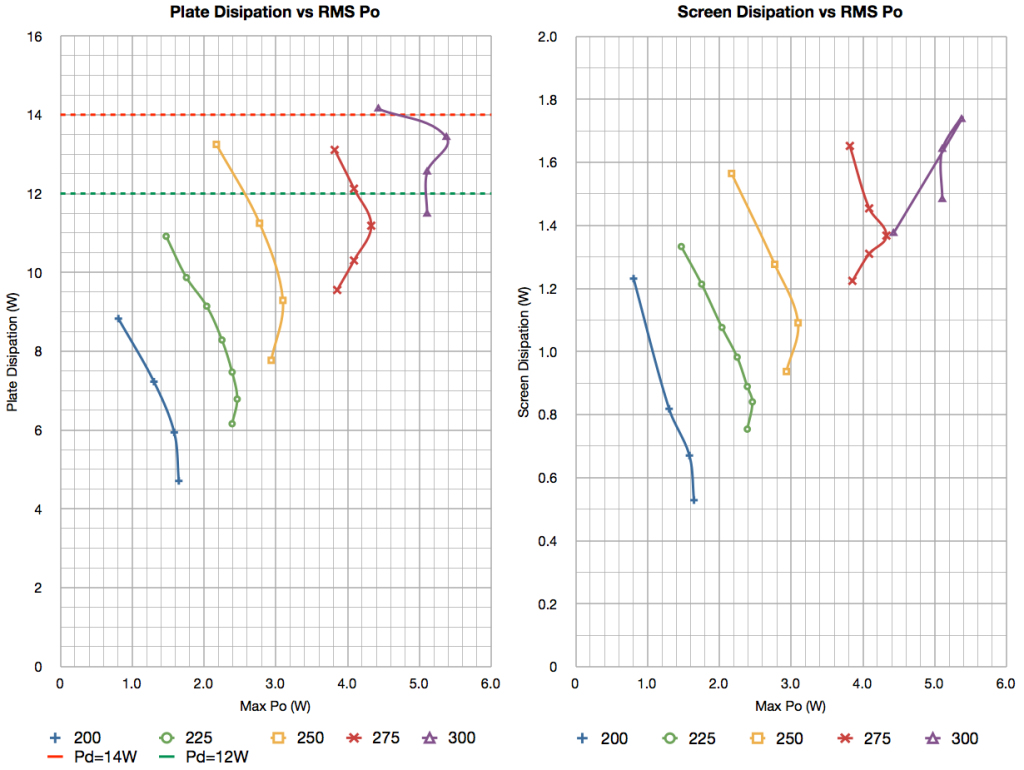
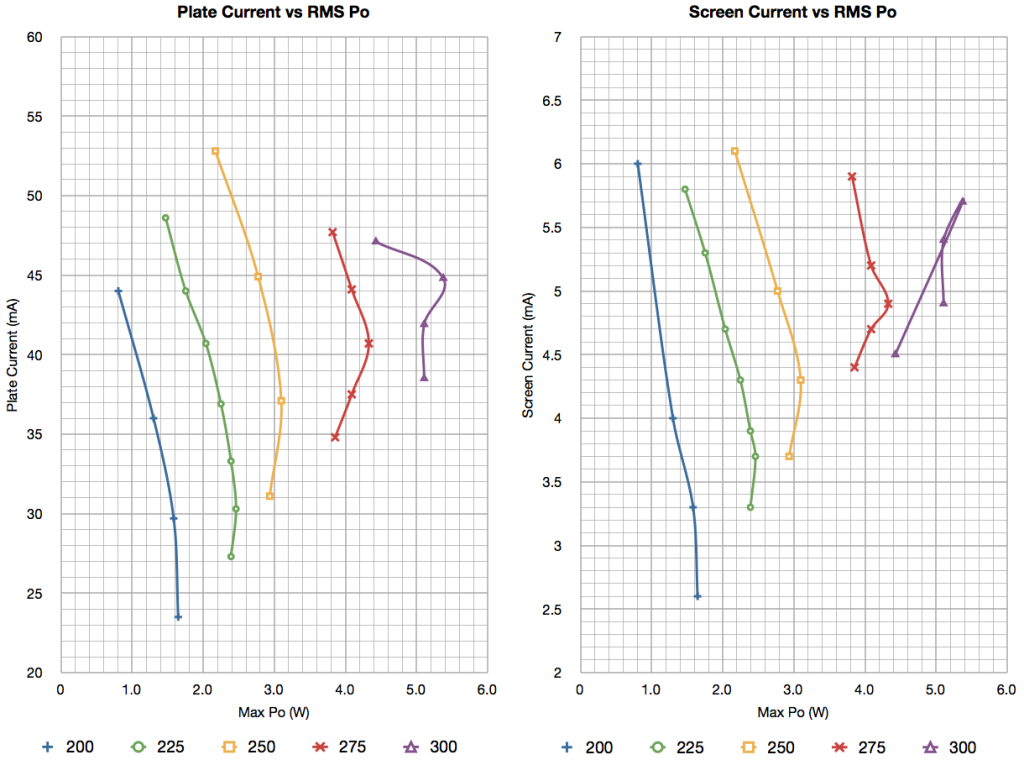
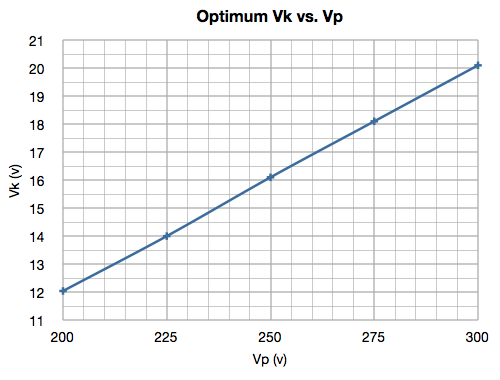
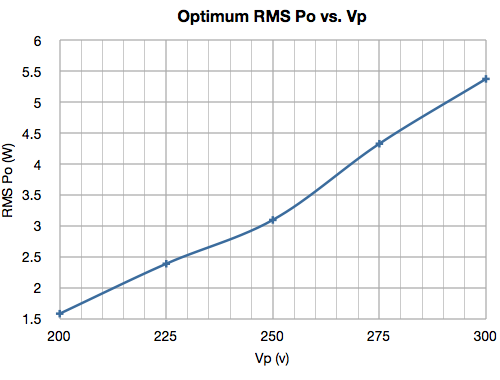


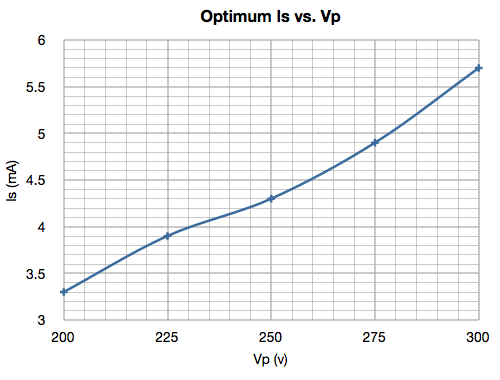
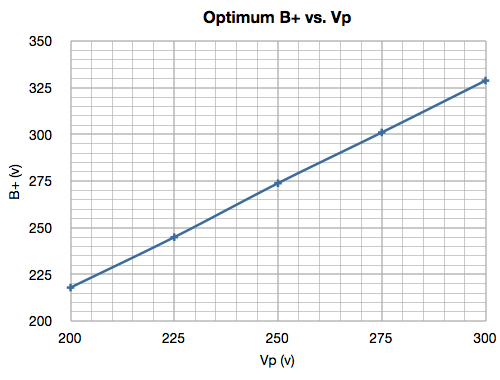
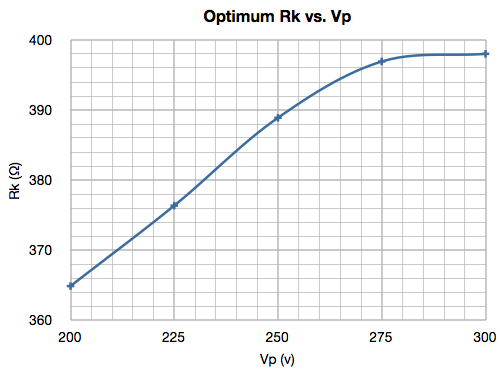

David Hafler put out an article back in 1954 called “Ultralinear Operation of 6V6 Tubes” which is easily found on the internet, the measured “best” tapping point for a 6v6 was found to be 23%. Edcor has an SE 8K primary transformer with a 23% tap for 6V6 and EL84 Ultralinear operation, I know because I paid to set it up back in the day. It isn’t on their website but since the design has been set up it can be ordered.
It’s good to know this option is available.
It should be noted that Hafler’s optimization criteria was the preservation of output power and minimization of distortion in a PP configuration with additional feedback. Since most PP configurations cancel most of the 2nd order distortions, this really pushes the cancellation of 3rd order harmonics. I have no issue with that.
However, I believe that such amps sound very cool. And even the elimination of the feedback and increasing the tap to ≈40% still leave the tubes a little cool. Going to an SE configuration helps. Of course, total power will be much lower than the PP configuration. It all really depends on personal preferences and what it takes to achieve them. YMMV.
Some incredible work here, thanks.
Gracias Matt.
Impresionante trabajo.
He realizado hasta ahora 3 Darlings amps con la ayuda de Diytube y muy contento con el sonido.
Ahora me planteo realizar un ultralinear con 6V6.
Que configuracion B+ Vp Ip me recomiendas teniendo en cuenta que escucho musica a un volumen muy muy bajo?
Yo habia pensado viendo tu articulo en B+ 250V
con 1.5W seria suficiente (Darlings have 0,75W).
Tengo un transformador (XPWR068 EDCOR) que aporta 150mA a 200V CT
seria suficiente?
Gracias de antemano por tus comentarios.
> Thanks Matt.
> Awesome work.
> I have made 3 Darlings amps so far with the help of Diytube and very happy with the sound.
> Now I’m considering making an ultralinear with 6V6.
> What B + Vp Ip configuration do you recommend considering that I listen to music at a very,
> very low volume?
> I had thought seeing your article in B + 250V
> 1.5W would be sufficient (Darlings have 0.75W).
> I have a transformer (XPWR068 EDCOR) that supplies 150mA at 200V CT
> It’d be enough?
>
> Thanks in advance for your comments.
Using your transformer (i.e. XPWR068) and a 6CA4 rectifier, I believe you can get about 225v to 235v for the B+. At this voltage level I would recommend biasing the 6V6s with a ≈370Ω 3W resistor like this one made by Vishay: RS02B374R0FB12. This should give you about 2W peak output in UL mode. Bias should be around 13v so a simple 12AU7 triode should make a sufficient driver.
Thanks again.
I plan to do it with an SS rectifier (kill me) 🤣 so I will do the calculations for 250v B +, Vk more or less 400 ohm?
Just be sure to use UF rectifiers (e.g. UF4007 or equivalent) in your power supply. With ss rectification you should be able to get about 265V B+ under load. This means that your Vp should be around 240v.
At Vp≈240V the cathode resistance is ≈384Ω. I would recommend the Vishay 392Ω 3W 1% resistor No:RS02B392R0FS70. The value is within about 3%. This should get you very close to target.
Thanks again.
Hey there, by any chance do you think that there would be similar results as to optimum plate voltage and cathode voltage for triode operation? I understand the power would be much less but I have been curious to the best way to optimise a triode SE or push pull 6v6 setup for some time. It would be a lovely tube for nearfield use on efficient speakers.
Actually, optimizing for power output and distortion for a triode is rather simple. Since the triode stage power output is proportional to the square of plate voltage, there are three simple step to triode optimization. First, increase the plate voltage to near max. For 6v6 this is about 315v. Then find an intersecting constant Ec line that provides sufficient swing, say around Ec=25v. The rotate the load line until you get the distortion for which you’re looking. Not terribly technical, but that’s about all there is to it. I still don’t think you’ll get more than about 2W max.
Due to lower plate resistance in triode mode and greater allowed plate voltage, the 6L6 is actually a much better candidate for triode operation. Getting over 4W power at the speaker is not an issue for the 6L6GC and a 5KΩ load.
I found your site via diyaudio
I really love your scientific approach.
At thid moment I am making a preamp wthe trioded 6v6 with a 22K anode resistor woking on 800 V
I have Russian 6v6 and Cossor
I will read everything you wrote.
Gracias, Gracias Matt, excelente trabajo de laboratorio suficiente como para que Yo intente utilizar mis 6V6 GT que tengo por allí y otros 12AX7 que debo conseguir para el pre-Amp . No vi antes un trabajo de investigación tan completo, quedaré esperando por los demás tubos EL34, EL84, KT88 etc, que prometistes antes.
Sin intención de abusar de tu bondad te solicito si podrías revisar mi proyecto “6V6” una vez que haya configurado el diagrama y me hagas los comentarios y recomendaciones necesarias.
Atte.
Alexis H. / Honduras, Centro America.
> Thank you, thank you Matt, excellent laboratory work enough for me
> to try to use my 6V6 GT that I have over there and another 12AX7
> that I must get for the pre-Amp. I did not see such a complete
> research work before, I will be waiting for the other tubes EL34,
> EL84, KT88 etc, that you promised before.
> Without intending to abuse your kindness, I ask you if you could
> review my “6V6” project once I have configured the diagram and
> make the necessary comments and recommendations.
> Atte.
Alexis H. / Honduras, Central America.
Alexis;
I’m glad you find the site useful and entertaining.
I am more than willing to take a look at your design. Just send it to me in an email to Matt@CascadeTubes.com and I’ll take a look at it.
Matt
Gracias, Gracias Matt, excelente trabajo de laboratorio, con tu información se abre el camino para poder hacer ese proyecto realidad, tengo los 6V6 GT y por alli consigo los preamplificadores 12AX7.
Sin querer abusar de tu bondad me gustaria revisaras mi proyecto una vez que lo diseñe y me hagas los comentarios y revisiones pertinentes.
Atte.
> Thank you, Thank you Matt, excellent laboratory work,
> with your information the way is open to make that project a reality,
> I have the 6V6 GT and there I get the 12AX7 preamplifiers.
> Without wanting to abuse your kindness, I would like you to review
> my project once I design it and make the pertinent comments and reviews.
> Atte.
Thank You for your beautiful article with the exact simple to understand explanations – and good hard data! Thank You! Will save many of us simpletons a lot of time looking for this elusive sweet spot/zone for a 6V6
I’m glad this helped. I am currently working on the writeup for the 6L6 UL optimization and will likely do the EL34 after that (I’ll have to add a suppressor-to-cathode switch to my jig). I get a lot of email on this post even after almost three years. I didn’t realize how many people are really hungry for some solid data on UL operation.
Stellar work (as always). I’ve been daydreaming about building a “Mini Lacewood” with some 6AQ5’s I have laying around. This information will be very helpful if my energy level ever permits the dream to be realized.
Are you going to try increasing the value of the cathode resistors in your Lacewood amp based on this research?
Thanks for your great site!
I have been thinking about it. However, in the lacewood design, driving the 6V6 bias up to 16v will mean having to bypass the cathodes on the driver to preserve overall sensitivity. This issue led me to design an entirely new schematic for the amp. If I do rewire the Lacewood, I’ll definitely post updates.
When, when,when?
I have all the parts to build my own Lacewood amp.
I have James 6135HSF and Hammond transformers simply because i live in Canada and importing american transformers is expensive. I will use it mainly in active bi-amplification and i don’t think i will put a volume control. I heard i can add negative feedback to the Lacewood, is this will add more power?
Best regards.